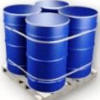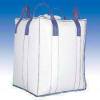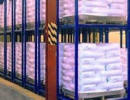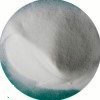| Anmol Chemicals is the pioneer manufacturers of Sodium Polystyrene Sulfonate BP Ph EurSodium hydroxymethanesulfonate or Sodium Formaldehyde Bisulfite, Pharmaceutical Excipients Food & Flavor chemicals in India. We supply Halal and Kosher Sodium hydroxymethanesulfonate or Sodium Formaldehyde Bisulfite made in an ISO9001, ISO22000 (FSSC22000) cGMP and GLP certified facility. Our group has several manufacturing facilities spread across the world, supported by toll manufacturers and representatives in UAE, Europe, Africa, USA, China and has several associated manufacturing facilities spread across India. All the Information on Physics, Chemistry, Applications, Uses and Technology on Manufacture of Sodium hydroxymethanesulfonate or Sodium Formaldehyde Bisulfite is in these pages. |
| The units have one or more of the certifications like FDA GMP, ISO 9001, ISO 22000, HACCP, REACH, Kosher & Halal |





Sodium hydroxymethanesulfonate or Sodium Formaldehyde Bisulfite SDS GHS MSDS of Manufacturers Suppliers
CAS Number: 25704-18-1 also reported are 9003-59-2 & 9080-79-9
Sodium hydroxymethanesulfonate or Sodium Formaldehyde Bisulfite Specifications of Manufacturers
CAS No.: 870-72-4, 212-800-9, HS Code: 283210**, Molecular Weight: 134.1, Chemical Formula: CH2 (OH) SO3Na
Sodium Formaldehyde Bisulfite (Bisulphite) SDS, Safety Data Sheet
Sodium Hydroxymethanesulfonate MSDS Sheet 05-Dec-20
Section 1 - Chemical Product Identification
Product Name & Other Names: Sodium formaldehyde bisulfite or Sodium hydroxymethanesulfonate or Formaldehyde sodium bisulfite.
Synonym: Formaldehyde sodium bisulphite; Formbis; Monosodium hydroxymethanesulphonate; Sodium hydroxymethanesulphonate; Sodium hydroxymethylsulphonate.
CAS #: 870-72-4
EINECS EC Number: 212-800-9
Molecular Formula: HOCH2SO3Na
Molecular Weight: 134.09
Relevant uses and uses advised against (if any): Industrial Manufacturing.
Section 2 - Hazards Identification
GHS, Globally Harmonized System Classification in accordance with 29 CFR 1910
Classification according to Regulation (EC) No 1272/2008
Not a hazardous substance or mixture according to Regulation (EC) No. 1272/2008.
This substance is not classified as dangerous according to Directive 67/548/EEC.
Labeling according to GHS & Regulation (EC) No 1272/2008
GHS Label Elements NONE |
Signal Word: None
Hazards not otherwise classified (HNOC) or not covered by GHS:
May cause mild eye irritation.
May causes mild skin irritation.
Precautionary statements:
P261: Avoid breathing dust/fume/gas/mist/vapors/spray.
P262: Do not get in eyes, on skin, or on clothing.
P281: Use personal protective equipment as required.
P303+P361+P353 - IF ON SKIN (or hair): Remove/Take off immediately all contaminated clothing. Rinse skin with water/shower.
P304 + P340 - IF INHALED: Remove victim to fresh air and keep at rest in a position comfortable for breathing.
P305 + P351 + P338 - IF IN EYES: Rinse cautiously with water for several minutes. Remove contact lenses, if present and easy to do. Continue rinsing.
P337+313: If eye irritation persists get medical advice/attention.
Section 3 - Composition, Information on Ingredients
Product Name & Other Names: Sodium formaldehyde bisulfite or Sodium hydroxymethanesulfonate or Formaldehyde sodium bisulfite.
CAS #: 870-72-4
EINECS EC Number: 212-800-9
Section 4 - First Aid Measures
Always seek medical attention after first aid measures are provided.
Eyes: Check for and remove any contact lenses. In case of contact, immediately flush eyes with plenty of water for at least 15 minutes. Cold water may be used. Get medical attention if irritation occurs.
Skin: Wash with soap and water. Cover the irritated skin with an emollient. Get medical attention if irritation develops. Cold water may be used.
Ingestion: Do not induce vomiting. Get medical aid if irritation or symptoms occur.
Inhalation: Remove from exposure and move to fresh air immediately. If not breathing, give artificial respiration. If breathing is difficult, give oxygen. Get medical aid.
Notes to Physician: Treat symptomatically.
Section 5 - Fire Fighting Measures
General Information: As in any fire, wear a self-contained breathing apparatus in pressure-demand, MSHA/NIOSH (approved or equivalent), and full protective gear.
Extinguishing Media: Use water spray, dry chemical, carbon dioxide, or chemical foam.
Flash Point: 184C ( 363.20F)
Special Information: In the event of a fire, wear full protective clothing and NIOSH-approved self-contained breathing apparatus with full face piece operated in the pressure demand or other positive pressure mode.
Section 6 - Accidental Release Measures
Personal precautions, protective equipment, and emergency procedures: Avoid breathing dust/fumes/gas/mist/vapors/spray. Use individual protective equipment (waterproof boots, suitable protective clothing, safety glasses, etc.). Restrict unprotected personnel from the area. Prevent any contact with hot surfaces. Do not approach facing the wind. Do not touch the spilled material.
Environmental precautions: Do not let the product enter drains, soil, or water sources.
Methods and materials used for containment Cleanup procedures and Storage:
Small Spill: Use appropriate tools to put the spilled solid in a convenient waste disposal container. Finish cleaning by spreading water on the contaminated surface and dispose of according law.
Large Spill: Do not inhale vapors, mist, or gas. Avoid dust formation. Contain spilled material. Cover with an inert, non-combustible absorbent material, (e.g. sand, earth, diatomaceous earth, vermiculite). Use a shovel to put the material into a convenient waste disposal container.
Section 7 - Handling and Storage
Precautions for safe handling: Apply according to good manufacturing and industrial hygiene practices. Ensure proper ventilation. In case of insufficient ventilation, wear suitable respiratory equipment. Wash thoroughly after handling. Do not drink, eat, or smoke while handling. Avoid contact with skin, eyes, and clothing. Minimize dust generation. Avoid breathing dust/fumes/gas/mist/vapors/spray. Avoid contact with eyes, skin, and clothing. Keep container tightly closed. Avoid ingestion and inhalation. Use individual protective equipment (waterproof boots, suitable protective clothing, safety glasses, etc.). Prevent any contact with hot surfaces.
Conditions for safe storage, including any incompatibilities: Store in cool, dry, and ventilated area away from heat sources and protected from sunlight in tightly closed original container. Keep air contact to a minimum. Store protected from heat, sparks and ignition sources and incompatible materials. Do not store with incompatible materials like strong oxidizing agents.
Section 8 - Exposure Controls, Personal Protection
Engineering Controls: Facilities storing or utilizing this material should be equipped with an eyewash facility and a safety shower. Use adequate ventilation to keep airborne concentrations low.
Ventilation System: A system of local and/or general exhaust is recommended to keep employee exposures as low as possible. Local exhaust ventilation is generally preferred because it can control the emissions of the contaminant at its source, preventing dispersion of it into the general work area.
Personal Respirators (NIOSH Approved): For conditions of use where exposure to dust or mist is apparent and engineering controls are not feasible, a particulate respirator may be worn. For emergencies or instances where the exposure levels are not known, use a full-face positive-pressure, air-supplied respirator.
Skin Protection: Wear protective gloves and clean body-covering clothing.
Eye Protection: Use chemical safety goggles and/or full face shield where dusting or splashing of solutions is possible. Maintain eye wash fountain and quick-drench facilities in work area.
Other Control Measures: Maintain good housekeeping in work area.
Section 9 - Physical and Chemical Properties
Physical State: White solid. Crystalline powder.
Odor: None reported.
Odor threshold: Not available.
pH: 7 - 8 (100g/L aq sol)
Relative density: Not available.
Freezing/Melting Point: 200C (decomposes).
Initial boiling point and boiling range: Not available.
Flash point: Not available.
Auto-ignition temperature: Not available.
Decomposition Temperature: 200C.
Upper/lower flammability or explosive limits: No information available.
Vapor pressure: No information available.
Vapor density: No information available.
Evaporation rate: No information available.
Flammability (solid, gas): No information available.
Partition coefficient: n-octanol/water: Not available.
Solubility: 800 g/L (20C)
Viscosity: No information available.
Section 10 - Stability and Reactivity
Chemical Stability: Hygroscopic; absorbs moisture or water from the air.
Conditions to Avoid: Incompatible materials, dust generation, exposure to moist air or water.
Incompatibilities with Other Materials: Strong oxidizing agents.
Hazardous Decomposition Products: Carbon monoxide, oxides of sulfur, carbon dioxide.
Hazardous Polymerization: Has not been reported.
Section 11 - Toxicological Information
Toxicity to Animals: Oral, rat: LD50 = 3200
Carcinogenicity: No component of this product present at levels greater than or equal to 0.1% is identified as possible or confirmed human carcinogen by IARC, ACGIH, OSHA and NTP.
Mutagenic Effects: No information available.
Developmental Toxicity: No information available.
Reproductive Effects: No information available.
Section 12 - Ecological Information
Toxicity to fish: No information available.
Persistence and Degradability: No information available.
Mobility: No information available.
Bioaccumulation/ Accumulation: No information available.
Results of PBT and vPvB assessment: No data available for assessment.
Section 13 - Disposal Considerations
Chemical waste generators must determine whether a discarded chemical is classified as a hazardous waste. Dispose material as per law. Follow all pollution control rules.
Section 14 - Transport Information
DOT USA, TDG Canada & ADR/RID Europe: Not regulated.
IMDG/IMO: Not regulated.
IATA/ICAO: Not regulated.
Section 15 - Regulatory Information
USA:
SARA Section 302 Extremely Hazardous Substances: None of the chemicals in this product have a TPQ.
DISCLAIMER: The information and recommendations set forth herein (hereinafter "Information") are presented in good faith and believed correct as of the date hereof. It is compiled from various sources and it is not necessarily all inclusive nor fully adequate in every circumstance. In addition, these suggestions should not be confused with nor followed in violation of applicable laws, regulations, rules or insurance requirements applicable.
Sodium hydroxymethanesulfonate or Sodium Formaldehyde Bisulfite Manufacturers
Anmol Chemicals
S-8, SARIFA MANSION, 2ND FLANK ROAD, CHINCHBUNDER, MUMBAI 400009, INDIA
TEL: (OFFICE) 91-22-23770100, 23726950, 23774610, 23723564. FAX: 91-22-23728264
e-mail: anmolc@mtnl.net.in

Exports to USA, Canada, UAE, Dubai, South Africa, Tanzania, Kenya, Nigeria, Egypt, Uganda, Turkey, Mexico, Brazil, Chile, Argentina, Europe Netherlands, Italy, Spain, Germany, Portugal, France, Malaysia, Indonesia, Thailand, Korea, Japan, etc.
Copyright and Usual Disclaimer is Applicable. 14 January, 2022
Barter
They who love thee on this earth, keep calling on thee and chanting thy beads
Lest thou forgetest.
They assign the credit of their hard work to your blessings
They keep you amused.
They come to thy temple with baskets of fruits, as if you were a glutton
They deny the same to their children.
They offer you milk for a bath and burn the ghee
They hardly understand the meaning of it.
They bring gold and diamonds. They come with beating of drums
They love to advertise their offerings.
They offer you a small bribe as advance for booty, called lottery
They love to dream.